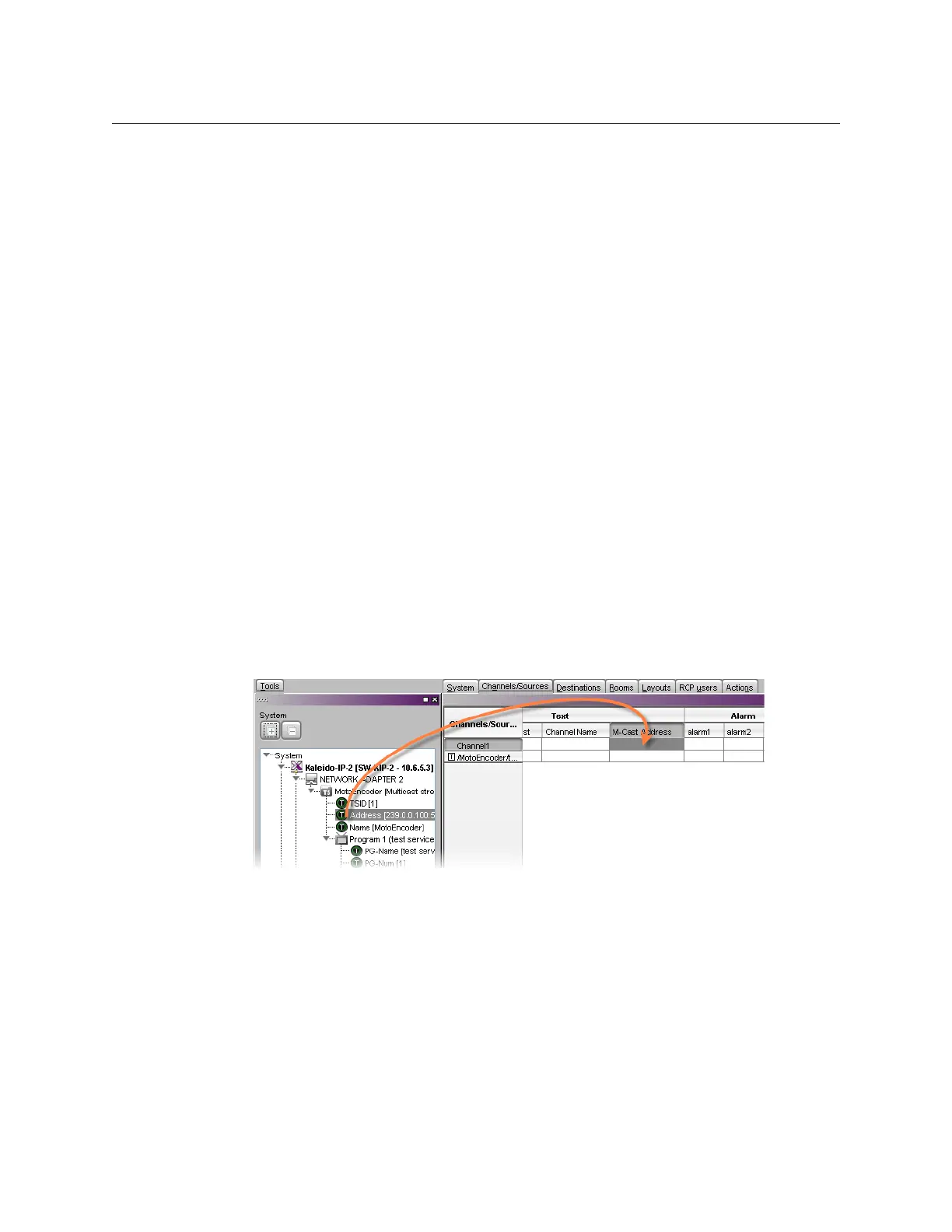242
Creating Layouts
Configuring UMDs
• static text associated with the current logical source assigned to the UMD, which you
entered in the sources table.
In the first case, the static text is tied to a specific layout whereas, in the other case, the text
is tied to a specific input signal.
To configure static text for a specific UMD in a layout
1In the Layouts tab, double-click the UMD whose static text you with to set.
2 Make sure the appropriate input language and method are set in your operating
system.
3 Type the desired static text.
To configure static UMD text from the sources table
1In the Channels/Sources tab, click the cell that corresponds to the appropriate text
level of the logical source that is assigned to the UMD whose static text you with to set.
2 Type the new static text.
Configuring Dynamic UMD Text
Assuming you have created logical sources (see Creating and Configuring Logical Sources,
on page 157) and a layout in XEdit, you can further configure UMDs in your layout to report
dynamic text labels, associated with the sources you wish to monitor.
To configure dynamic UMD text
1In the Channels/Sources tab, click a cell that corresponds to the appropriate text level
of a logical source.
2 In the filtered System list, navigate to the text element you wish to monitor, and drag it
onto the selected cell.
3 Make corresponding assignments to other logical sources by incremental copy, if
desired (see
Making Further Assignments by Incremental Copy, on page 168).
4On the File menu, click Save.
Changes to the sources table are saved.
5Click the Layouts tab, and then open the layout you wish to configure.
6 Unlock the appropriate composite monitor if applicable (see Unlocking a Composite
Monitor, on page 260), and then click the UMD whose dynamic text reporting behavior
you with to set.
7 In the Properties pane, click the Text label level box, and then select the text level you
configured in
step 2.
